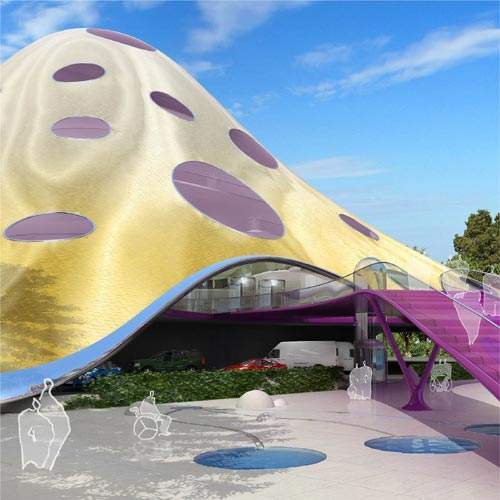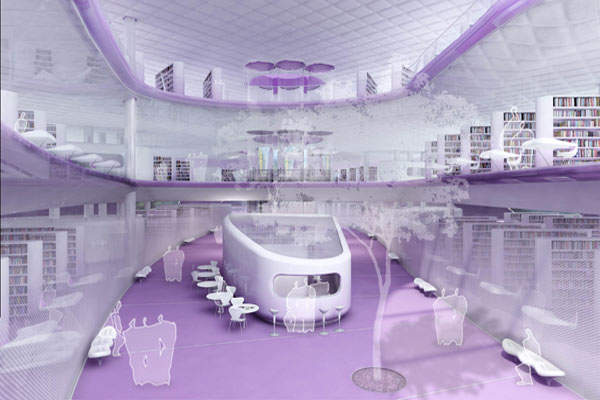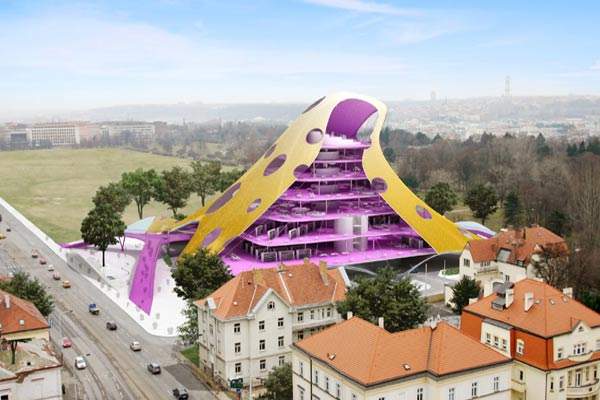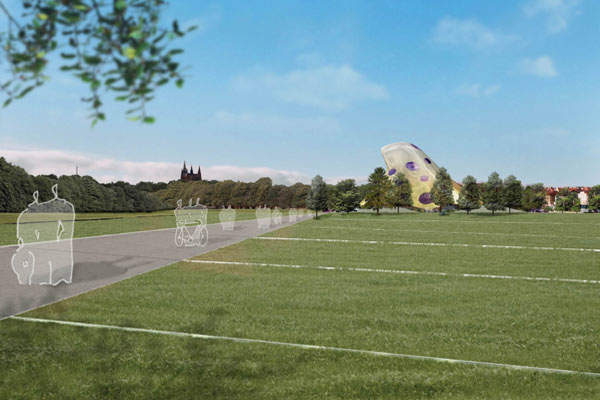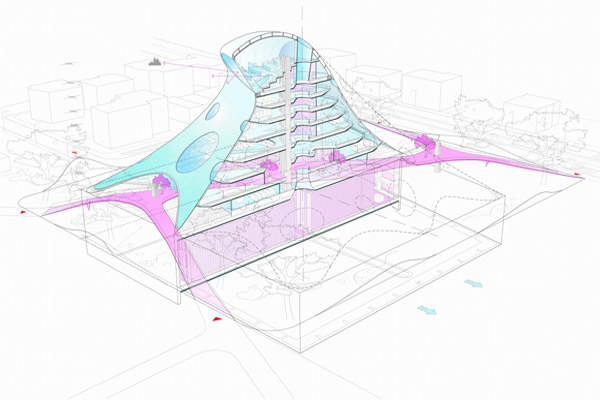London-based architects Future Systems won a 2006 competition to design a new national library for the Czech Republic. It is to be located in Prague on a large greenfield site on the Letna plateau.
The winning design is unusual not least because it reminds one of, perhaps, an alien or perhaps a piece of 1970s children’s playground furniture, but because it offers generous natural light via curving windows that are scattered across the external skin of the building.
According to the architects, this unique design minimises volume while maximising space, light and views.
BAROQUE UPDATED?
The winning team was selected in 2007 from a field of 355 entries by an international jury of ten, including UK-based architect Zaha Hadid, UNESCO urbanistic expert Irene Wiese-von Ofen, and the head of the Czech National Library, Vlastimil Ježek. First prize was €160,000.
Future Systems’ team was led by Czech-born Jan Kaplicky. According to Future Systems, the 40,000m², curvaceous building is to be placed on a white unpolished marble platform, with mirror finished stainless steel wings used to elevate the perimeter edges. This means the building’s own image can be reflected back from different angles.
“The architecture of the proposed building is a three-dimensional object shaped to minimise the volume and to extend the views over the surrounding tree level,” the architects said.
The new library is intended to supersede the 16th century former Jesuit college, the Klementinum, which was built on the site of the 11th century St Kliment’s Chapel. The Klementinum has played host to the Czech national library since the late 19th century.
The Klementinum extends over 2ha of historic central Prague. The main construction period of Klementinum, which gave its baroque appearance, ran from 1578 to 1726. From 1924 to 1929, architect Ladislav Machon modernised the building complex somewhat to suit library needs.
NEW NATIONAL LIBRARY DESIGN
For the new library, Future Systems has proposed a ‘unique form and curvature’ as evocative of the baroque architecture for which Prague is justly famous. That said, the Future Systems’ design is not so much baroque as ultra-modern, right down to the materials used.
Kaplicky, a native of Prague, plans the new building as pyramidal and semi-organic in appearance, topped by the viewing platform – massive ‘eye’ on the city. The super-structure would be a steel frame with internal columns on a 19m × 9m grid, supporting a composite steel beam / concrete slab floor. Perimeter columns will be inclined to support the floor, allowing for a 3m perimeter cantilever zone.
Lateral stability will be provided by internal concrete cores. The skin and steel arches of the roof will be tied to the internal frame using a ring beam on the top floor.
Future Systems said the skin of the new national library would be covered with champagne-coloured anodised aluminium tiles. These fade in colour from dark at the bottom to light at the top of the structure.
“Special features inside the national library building include the top-level viewing platform and café with spectacular views over Prague, comfortable and colourful reading rooms, the first level ‘street’ which continues the public realm through ramps and stairs from the street and park inside the building, and the educational viewing well to the automated book storage,” the architects said.
It is also expected that the new library will boast natural air-conditioning using a thermal system of channels in the 1.2m-thick basement walls surrounding the 15m-deep underground book storage area and raised floors that allow for air circulation.
An estimated ten million books stored underground – enabling maximum storage density and minimal land footprint – will be distributed by an automated storage and retrieval system and reach the borrower in under five minutes. Acquisitions and maintenance will be on the lowest floor, with three floors of reading rooms next, then three storeys dedicated to offices and administration. On the top, seventh, floor, will be a cafe as well as the viewing platform.
Future Systems has claimed that the library, when completed, will be one of the most modern libraries in the world.

